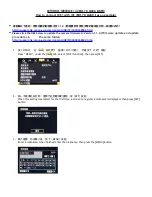
5. RipEX2 in detail
5.1. Bridge mode
Bridge mode enables transparent data transfer over the RipEX2 network. It is suitable for Point-to-
Multipoint networks, where Master-Slave applications with polling-type communication protocol are
used. The Bridge mode is suitable also for Point-to-Point links (both half and full duplex).
One of the advantages of the Bridge mode (together with Radio Transparent protocol) is its transparency.
For example: both IPv4 and IPv6 type of traffic passes through; Frames defined by IEEE802.1Q-2018
are supported (e.g. VLAN, QinQ).
Bridge mode operation depends on the following system settings:
• Radio channel: Transparent protocol selected
• Ethernet ports: The Ethernet ports, intended to be used in Bridge mode, are grouped together in the
Network interface (default name "bridge"), which is bridged with the Radio interface (parameter
"Bridged with radio" enabled)
• COM ports: "Transparent protocol" selected
Radio channel
Transparent radio channel protocol does not solve collisions. There is a CRC check of data integrity
to assure once a message is delivered, it is error free.
Ethernet ports
The whole radio network build from RipEX2 radio modems behaves as a standard Ethernet bridge. An
Ethernet bridge ("Network interface" in RipEX2) automatically learns which devices (MAC addresses)
are located in the local LAN and which devices are accessible over the radio channel. Consequently,
only the Ethernet frames addressed to remote devices are physically transmitted over the radio channel.
This arrangement saves the precious RF spectrum from extra load which would be otherwise generated
by local traffic.
By default all Ethernet ports are bridged together with the Radio interface. It is possible to remove some
Ethernet ports from this Network interface (having the Radio interface attached) to prevent unwanted
traffic to enter the radio channel.
At least one Eth interface has to be bridged with the Radio
It is possible to form another Network interface(s). Any needed Ethernet traffic can be routed in between
individual Network interfaces.
It is a good practice to detach one (or more) Ethernet port(s) from the main Network interface (described
above) for other purpose than transparent data transfer. One typical example is: dedicated port for the
unit management. It is very useful to use such a separated port for unit management, because there
is no danger of transferring unwanted traffic (e.g. system updates or similar traffic) from the client PC
over the radio channel. You can create another Network interface (e.g. called LAN-mgmt). Attach the
previously detached ETH port and configure an IP address to be able to access the unit management.
39
© RACOM s.r.o. – RipEX2 Radio modem & Router
RipEX2 in detail
















































